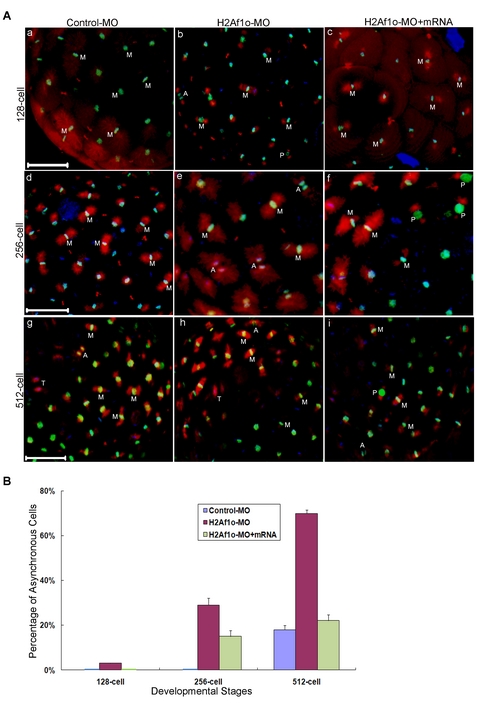
Newsroom
Revealed: Biological Function of Oocyte-specific Histone H2A Variant for Maintaining Cell Synchrony Division in Early Embryos
Oocyte-specific histone variants have been expected to play significant roles in early embryonic development, but the exact evidence and the biological function have remained unclear. Recently, a research group led by Prof. Gui Jian-Fang from Institute of Hydrobiology, Chinese Academy of Sciences (IHB) has presented evidence that H2af1o, a new oocyte-specific H2A variant which was identified in 2009 ( Wu et al., Biology of Reproduction, 81: 275-283), is required for cell synchrony before mid-blastula transition in early zebrafish embryos.
The H2A variant is oocyte-specific, peaks in mature eggs and is supplied to early embryos. Prof. Gui’s team constructed a series of deletion plasmids of the zebrafish h2af1o tagged with EGFP, and determined the main key function regions including nuclear localization signal of N-terminal 25 amino acids and nucleosome binding region of 110-122 amino acid sequence in the C-terminus by microinjecting them into one-cell stage zebrafish embryos. In comparison with ubiquitous H2A.X, the H2af1o was revealed to confer a more open structure than canonical H2A in the nucleosomes.
Furthermore, they conducted the h2af1o-specific morpholino knockdown analysis in early embryos of zebrafish, and revealed its biological function for maintaining cell synchrony division because the H2af1o deficiency disturbed cell synchrony in early cleavages before mid-blastula transition. Therefore, their current findings provided the first case to understand the biological function of maternal oocyte-specific histone variants in vertebrates.
 |
| The Figure shows that H2af1o deficiency damages cell synchrony of early cleavages before mid-blastula transition in early zebrafish embryos. |